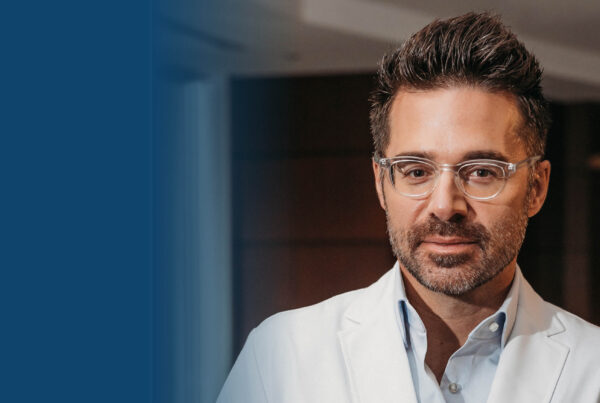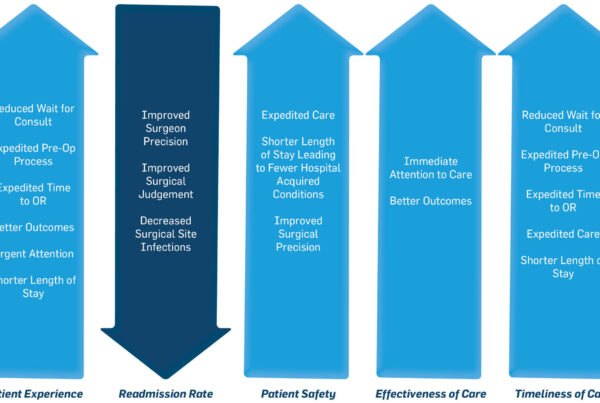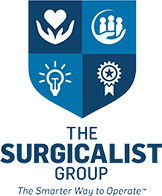Mit Desai, MD, CEO & Founder of The Surgicalist Group was settling in after dinner for the long flight home on Cathay Pacific from Hong Kong to NYC when he was called upon to help a patient in need. As a surgicalist, he was familiar with urgent calls to action. This time, however, he was 35,000 ft over the Pacific Ocean.
Cathay Pacific Flight 840 started off like any other long-haul flight when I boarded the plane going from Hong Kong to New York City. Cathay Pacific is known for their in-flight service excellence and I was looking forward to enjoying a meal, relaxing, and watching movies after a week-long vacation in southeast Asia. As the flight took off from Hong Kong, I settled into my seat and looked out the window. I was struck by the majesty of the city. The history. The people. The endless venues to explore. A week certainly was not long enough.
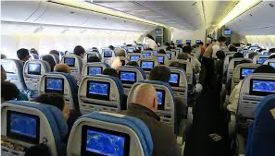 After finishing a meal and watching a movie, I was ready to rest during the long flight to New York. Just at that moment, I heard a familiar overhead crew announcement. “If there are any physicians onboard, please make yourself known to cabin crew.” As a general surgeon, I have heard that request on flights before. Typically, there are a few physicians on flights who are ready to help. I collected myself and wandered down the aisle to offer my assistance. The flight attendants were gathered around a teenage boy who was traveling alone. The boy was hunched over with excruciating abdominal pain. I was immediately struck by two things. First, this boy needed immediate attention. Secondly, I was surprised no other physicians made themselves known to the crew. Despite being the sole physician onboard, an autonomic reflex kicked in, triggering me into surgical mode. I instantly sprang into action.
After finishing a meal and watching a movie, I was ready to rest during the long flight to New York. Just at that moment, I heard a familiar overhead crew announcement. “If there are any physicians onboard, please make yourself known to cabin crew.” As a general surgeon, I have heard that request on flights before. Typically, there are a few physicians on flights who are ready to help. I collected myself and wandered down the aisle to offer my assistance. The flight attendants were gathered around a teenage boy who was traveling alone. The boy was hunched over with excruciating abdominal pain. I was immediately struck by two things. First, this boy needed immediate attention. Secondly, I was surprised no other physicians made themselves known to the crew. Despite being the sole physician onboard, an autonomic reflex kicked in, triggering me into surgical mode. I instantly sprang into action.
I attempted to examine the boy’s abdomen while he was hunched over, sitting on his knees in the airline seat. He didn’t seem to have abdominal tenderness, which meant he didn’t have an emergent issue. Asking basic questions about the boy’s pain through a translator, I ascertained he wasn’t in dire straits. However, while the situation was urgent, nothing warranted informing the pilot of the need for an emergency landing. I recommended he not eat any food and only take sips of water or juice throughout the rest of the flight. I asked the chief cabin purser to keep me abreast of any changes before returning to my seat.
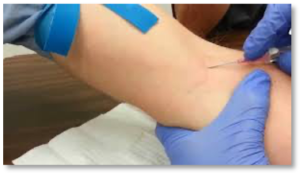
For a long stretch of our 15-hour flight the boy was quiet, and I thought he must be feeling better. However, about 90 minutes prior to landing at JFK airport, I was called back to re-examine him. I decided a cursory exam wouldn’t suffice and we made a makeshift bed by laying down a large blanket in the galley and helped the boy lay down there. He still had no abdominal tenderness, but was bloated and couldn’t expel gas (e.g., in medical lingo that meant he was tympanitic). It became clear his bowels weren’t functioning properly. The question was whether it was due to a medical condition, such as gastroenteritis, or a more emergent condition potentially requiring surgery, like a small bowel obstruction. Luckily there was an empty seat in first class, so we moved him up there and made sure he was kept warm. He also needed intravenous fluids right away to address the dehydration. At that moment, I looked around to find a nurse to start an IV. Of course, we were on a plane and I didn’t have a team with me on the flight. It quickly dawned on me – I was going to be the one to start the IV despite the fact I hadn’t done so in over 20 years. Clinically, this is a very basic procedure but knowing the boy was dehydrated, it was going to be difficult since his veins would be ‘flat’. The emergency equipment on most planes is very basic and not what I was used to in the hospital, which made me a bit uncomfortable. Regardless, I sifted through the equipment available, threw out expired supplies and medicines, and got started. I opened an alcohol swab from the emergency kit to sterilize the skin and found several of the swabs were dried out, raising my anxiety level further. Luckily, I managed to find one moist swab. It would have to do. After placing a makeshift tourniquet and applying the alcohol swab to his skin to sterilize the puncture site, I placed an 18-gauge needle into his antecubital fossa (elbow joint) and saw a flash of red. Eureka! The needle was in the vein and I was able to advance the catheter slowly over the needle. I secured the catheter in place with tape and hooked up the saline bag. I pushed in 500cc of saline as quickly as I could, by manually squeezing the bag but not too hard to avoid disrupting the IV at the insertion site (a skill perfected from my trauma surgery days). I wanted to hang a second saline bag on an IV pole, but, airplanes are not hospitals with medical equipment. I did the next best thing – I MacGyvered a solution, enabling the bag to hang appropriately. What a thrill it was to see the steady drip of saline coursing into the boy’s veins! After a little while, the boy told me he was feeling better. We were at 30 minutes before landing at that point. Once we landed at JFK, I relayed my differential diagnosis to the EMS team as they boarded the plane to take the boy to a local hospital. I wished the boy well and went back to my usual routine following my vacation.
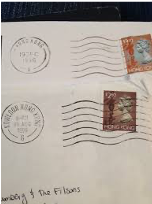
After a few months passed, I received letter from the boy’s father. He thanked me for helping his son on the flight and shared the final diagnosis and treatment the boy received. He had a small bowel obstruction, requiring hospitalization in New York for three days. The medical treatment cleared the obstruction and surgery wasn’t required. The young man was able to join his travel group for the remainder of their visit to America. He eventually returned to Hong Kong and the rest of his medical course was uneventful.
My experience on that Cathay Pacific Flight 840 reminded of the feeling I had when I decided to become a physician. Compassion for my fellow human beings is a core part of my personality and has been for as long as I can remember. If fact, having compassion for others was one of the reasons I decided to become a doctor, instead of other professions my parents suggested, like becoming an engineer or lawyer (the only other careers permissible if you were Indian and growing up in the 1980s). While these are all noble professions, I wanted to help people through their most vulnerable time of need. In fact, becoming a surgeon would enable me to make the ultimate difference for patients. As acute care general surgeons or surgicalists, we face patients with life threatening conditions who need our intervention. We are trained to deal with complex situations, to be calm under pressure, and to create positive outcomes.
Oddly enough, this basic medical emergency experience in the air also reminded me of the value each member of the surgical team brings to every patient, every day. As surgicalists, we called upon to resolve emergent and urgent medical conditions. To be successful, we rely on having a collaborative extended healthcare team. We rely on the peri-op OR nurses who prepare patients prior to surgery, communicating with the patient and their families about what to expect before, during, and after surgery and to start IVs. We rely on the scrub nurses/techs and circulating nurses to have the right supplies at the right time, making surgery proceed as smoothly as possible. And, outside the hospital, we rely on the EMS team to stabilize patients prior to arriving in the emergency department and to relay to the clinical team an accurate assessment of the patient’s condition, giving our patients the best chances for survival and recovery. We rely on our anesthesia team members make it possible for patients to have a positive surgical experience without undue anxiety or discomfort through appropriate sedation and anesthesia.
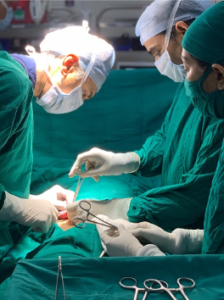 Thank goodness for experiences like this to reveal our true purpose and what is important. Such experiences are also reminders to show gratitude for those who work with us to achieve our common goal of helping patients restore health. I am thankful to be part of such a noble profession. I am grateful to be surrounded by compassionate people who want to help others – from our office staff who are at an arm’s length away from the bedside, the extended medical team, and to our surgicalists and physician assistants who work together to care for patients daily in hospitals across the country 24/7. Following that flight, I also had a renewed respect and gratitude for the airline employees who are transporting people every day around the globe. Somehow the flight attendants were able to work with me to create a makeshift hospital bed, calm the patient inside a crowded fuselage amidst a medical emergency. My faith in humanity was reinforced from such a simple experience.
Thank goodness for experiences like this to reveal our true purpose and what is important. Such experiences are also reminders to show gratitude for those who work with us to achieve our common goal of helping patients restore health. I am thankful to be part of such a noble profession. I am grateful to be surrounded by compassionate people who want to help others – from our office staff who are at an arm’s length away from the bedside, the extended medical team, and to our surgicalists and physician assistants who work together to care for patients daily in hospitals across the country 24/7. Following that flight, I also had a renewed respect and gratitude for the airline employees who are transporting people every day around the globe. Somehow the flight attendants were able to work with me to create a makeshift hospital bed, calm the patient inside a crowded fuselage amidst a medical emergency. My faith in humanity was reinforced from such a simple experience.
At the end of the day, what matters most are the people on your team. That’s why when we hire our colleagues, including surgicalists, we employ our “Hire Smarter” algorithm. Our primary objective in hiring is to ensure we bring people onboard who share and uphold our core values of compassion, stewardship, innovation, and quality. With our shared core values, I’m confident every one of our surgicalist team members, faced with a similar medical emergency, would not hesitate to offer their compassion and service. They would do it for no other reason than it’s the right thing to do.

